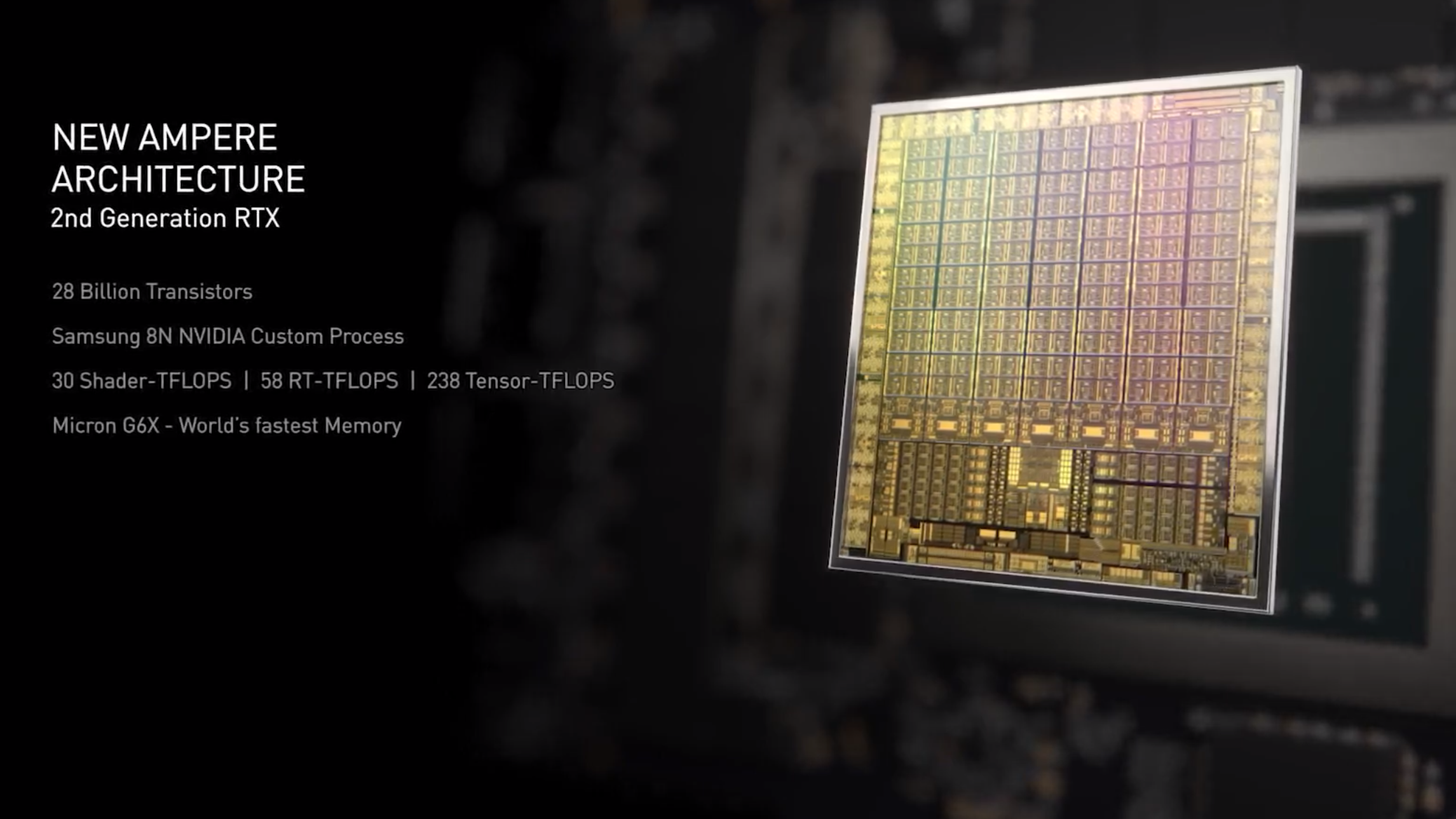Nvidia confirms Samsung 8nm process for RTX 3090, RTX 3080, and RTX 3070
While the professional chips were made with using a similar TSMC 7nm process to AMD, the gaming cards are all Samsung.

Nvidia has confirmed that its Ampere second-gen RTX cards are all built using the Samsung 8N node, as opposed to the TSMC 7nm production process used for its initial Ampere GA100 GPU. The rumour mill had been grinding away for months, trying to decide whether Nvidia would be using TSMC or Samsung for its next-gen cards.

Best wireless gaming mouse: ideal cable-free rodents
Best wireless gaming keyboard: no wires, no worries
Best wireless gaming headset: top untethered audio
Nvidia's Jen-Hsun Huang reportedly added to the question by stating that, while it was going to use TSMC for the majority of its GPUs, it was going to use Samsung's chip manufacturing facilities for a small subset of its graphics silicon production.
Cut to September 1 and the GeForce Special Event and Jen-Hsun Huang announces that all of the monstrously large Nvidia Ampere RTX GPUs are being built on Samsung's 8N process. How close that ends up being to TSMC's 7nm node we won't really know, maybe even when we've got cards in our hands.
But Nvidia is calling this the "greatest generational leap ever" with close to 2x the performance-per-Watt capabilities of the still pretty damned quick Turing GPUs.
With a smaller Samsung-built process node, and twice the number of CUDA cores in each SM than was even rumoured, there is a huge amount of rasterizing performance on offer with the new generation of GeForce chips.

There's also a generational uplift in ray tracing performance too, with the $499 RTX 3070 reportedly capable of delivering well over 60fps at 1440p with ray tracing enabled. Then the $699 RTX 3080—what Nvidia is calling the flagship of the Ampere range despite the existence of the hyper-expensive RTX 3090—is said to be able to top 4K at 60fps even with all the RTX bells and whistles.
Keep up to date with the most important stories and the best deals, as picked by the PC Gamer team.

Dave has been gaming since the days of Zaxxon and Lady Bug on the Colecovision, and code books for the Commodore Vic 20 (Death Race 2000!). He built his first gaming PC at the tender age of 16, and finally finished bug-fixing the Cyrix-based system around a year later. When he dropped it out of the window. He first started writing for Official PlayStation Magazine and Xbox World many decades ago, then moved onto PC Format full-time, then PC Gamer, TechRadar, and T3 among others. Now he's back, writing about the nightmarish graphics card market, CPUs with more cores than sense, gaming laptops hotter than the sun, and SSDs more capacious than a Cybertruck.

